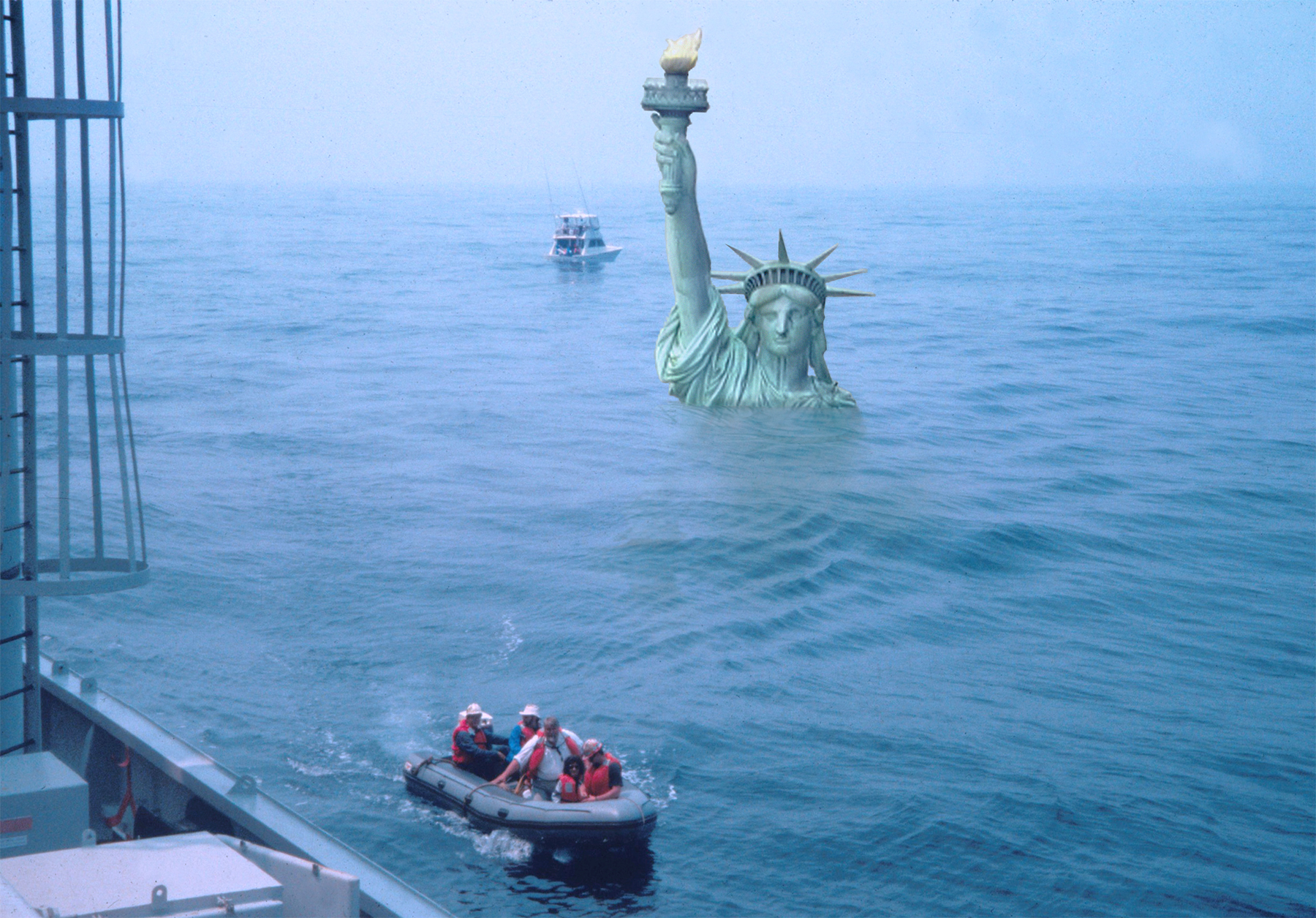
First Local Extinction Attributed to Sea Level Rise Documented by U.S. In a groundbreaking report, the United States government has confirmed the first known local extinction of a plant species solely due to sea level rise. The tragic loss highlights the devastating impacts of climate change on biodiversity and the urgent need for concerted action. The extinct species, a rare wildflower known as the seaside spurge (Euphorbia misera), once thrived on the coastal salt marshes of California’s San Francisco Bay Area. However, rising sea levels have inundated its habitat, transforming the marshes into shallow lagoons. With nowhere to escape the encroaching waters, the seaside spurge has disappeared from its former range. The report, published by the U.S. Geological Survey, underscores the gravity of the extinction crisis facing coastal ecosystems. As sea levels continue to rise, countless other species are at risk of disappearing forever. “This is a sobering reminder that climate change is not a distant threat,” said Dr. Carrie Whitmore, lead author of the study. “It is happening right now, and it is having devastating consequences for our planet’s biodiversity.” The extinction of the seaside spurge also serves as a wake-up call to the public. It demonstrates that the impacts of climate change are no longer limited to distant polar regions or remote islands. They are affecting communities and ecosystems all over the world. “We need to act now to mitigate the effects of climate change on our planet’s biodiversity,” said Dr. Whitmore. “This means reducing greenhouse gas emissions, investing in renewable energy, and protecting and restoring coastal habitats.” The extinction of the seaside spurge is a tragedy, but it can also be a catalyst for change. By raising awareness of the devastating impacts of climate change, we can inspire the collective action needed to protect our planet for future generations.First Local Extinction Due to Rising Sea Levels: Key Largo Tree CactusFirst Local Extinction Due to Rising Sea Levels: Key Largo Tree Cactus The Key Largo tree cactus, once a thriving species in the Florida Keys, has become the first local extinction in the United States due to rising sea levels. Discovered in 1992, the cactus’s population has been decimated by saltwater intrusion, hurricanes, high tides, and mammal consumption. By 2021, only six fragments of the population remained, which were taken offsite to ensure their survival. The cactus’s limestone outcrop habitat has been severely damaged by storm surges, high tides, and floods, making it unsuitable for the plant’s growth. Jennifer Possley, director of regional conservation at Fairchild Tropical Botanic Garden, fears that the extinction of the Key Largo tree cactus is an indicator of the potential impact of climate change on other low-lying coastal plants. Despite being listed as federally endangered in 1984, the cactus’s population continued to decline sharply. Researchers are hopeful that the tree cactus can be replanted in the wild in the future, but suitable environments are becoming increasingly scarce. While the cactus is now extinct in the United States, it still exists in the wild in parts of the Caribbean. George Gann, executive director for the Institute for Regional Conservation, emphasizes the urgency of the biodiversity loss crisis. In South Florida, over one-fourth of native plant species are critically threatened or extinct due to habitat loss, over-collecting, invasive species, and other factors. Over 50 species, including four global extinctions, have already been lost in the region.
Local Extinction Due to Sea Level Rise In a somber milestone, the United States has documented the first locally extinct species as a direct result of sea level rise. The victim, a small bird known as the Ridgway’s rail, once thrived along the Gulf Coast in Louisiana. Over the past century, the coastal marshes where the rails resided have rapidly dissolved due to rising sea levels and subsidence. These marshes provided critical habitat, food, and shelter for the species. As the waterline pushed inland, the rails lost their homes and were unable to relocate to higher ground. Scientists conducted extensive surveys and monitoring efforts but were unable to locate any remaining Ridgway’s rails in the area. The species is now officially declared locally extinct. This tragic loss highlights the devastating impacts of climate change on biodiversity. As sea levels continue to rise, coastal ecosystems and the species that rely on them are facing increasing threats. Experts warn that the extinction of the Ridgway’s rail could be just the beginning. Many other coastal species, including endangered marsh birds and sea turtles, are also at risk as their habitats disappear. The loss of these species not only undermines the intricate web of life in coastal ecosystems but also diminishes the resilience of these environments to climate change. Conservation organizations and scientists are calling for urgent action to protect coastal habitats and mitigate the impacts of sea level rise. Efforts include restoring wetlands, reducing pollution, and implementing policies that prioritize nature-based solutions. The extinction of the Ridgway’s rail serves as a stark reminder of the devastating consequences of inaction. It is a profound wake-up call that we must act now to protect our planet and prevent further loss of biodiversity from climate change.
First Local Extinction Attributed to Sea Level Rise Documented by U.S.
Related Posts
Kate Hudson Recreated Her Iconic How to Lose a Guy in 10 Days Scene During the World Series, and I Can’t Ignore the Fans’ Reaction to It
Kate Hudson isn’t just an award-winning one actress with famous parents; she is also a huge baseball fan. So it’s no surprise that she attended this year’s World Series to…
Software Catalog Unveils Array of Cutting-Edge Solutions for Enterprise Transformation
Software Catalog Unveils Array of Cutting-Edge Solutions for Enterprise TransformationSoftware Catalog Unveils Array of Cutting-Edge Solutions for Enterprise Transformation Technology is rapidly reshaping the business landscape, making it imperative for…